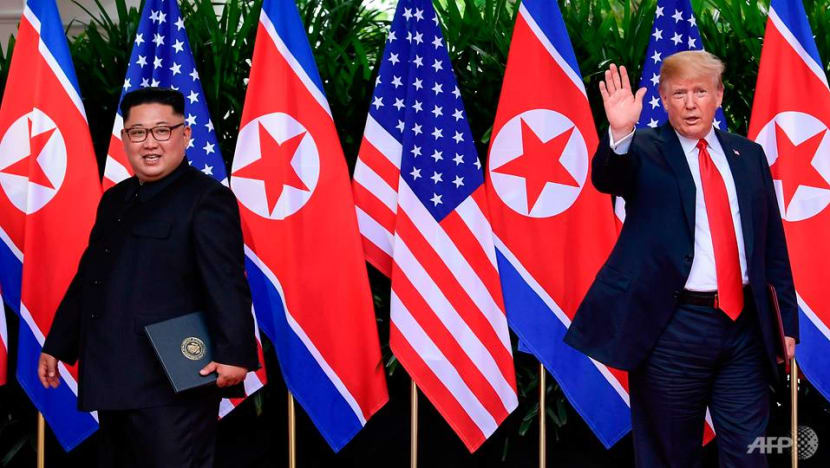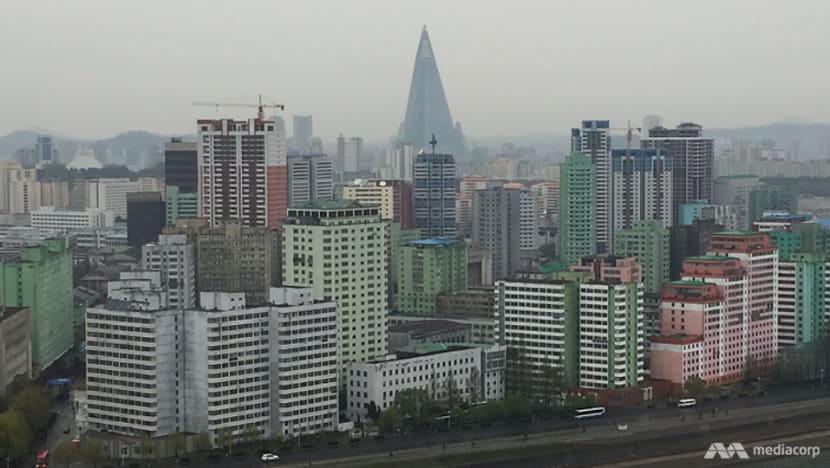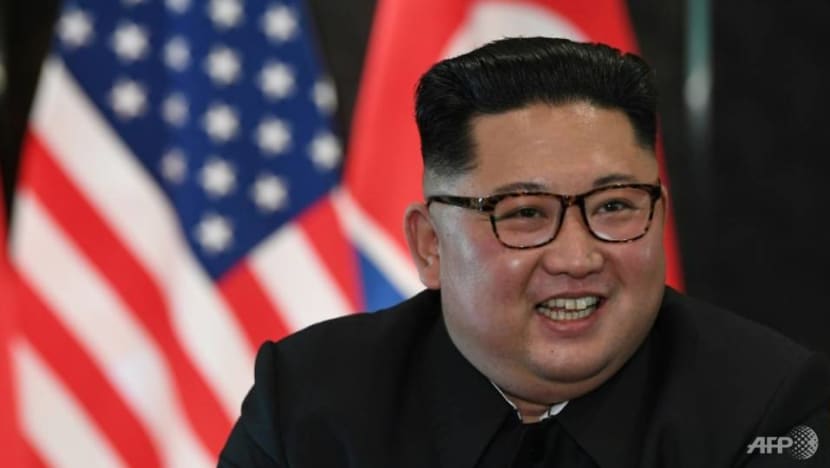commentary Commentary
Commentary: The gap between the US and North Korea hasn't closed since the Singapore Summit
The two nations' different approaches to the vague Singapore declaration made during the Jun 12 summit makes it difficult for them to come to an agreement, says one observer.

President Donald Turmp waves as North Korea leader Kim Jong Un leaves after their meetings at the Capella resort on Sentosa Island. (Photo: AFP/Susan Walsh)
SEOUL: During the lead up to the Jun 12 summit in Singapore between US President Donald Trump and North Korean leader Kim Jong Un, some believed the armistice that ended the Korean War in 1953 would at long last be replaced by a formal peace treaty.
Two months later, the diplomatic momentum has seemingly hit a wall.
The key issue is the differing views of the United States and North Korea on the order and scope of implementation of the four articles of the Singapore declaration.
Pyongyang believes that halting missile and nuclear tests, decommissioning certain weapons sites and beginning the process of returning US servicemen remains from the Korean War satisfies the agreement’s confidence-building measures.
Now, Pyongyang is demanding progress on the remaining article and calling for the United States to make a "bold move" towards establishing a peace regime.
PEACE TREATY KEY TO THE OUTSIDE WORLD
Security experts caution against giving in to North Korea’s demands, as Pyongyang is known to exploit ambiguities in agreements.
The United States’ last major negotiation with North Korea was the Leap Day agreement in 2012 that involved Pyongyang halting uranium production and missile testing.
Later that year, North Korea launched a satellite that was technically not a missile but contained missile technology and the agreement fell apart.
But the North Korean leadership has reason to act with urgency on the issue of an official peace treaty. Besides the emotional significance of formally ending the tragic war that has kept North and South Korea separated and technically enemies for nearly 70 years, a peace treaty is a critical step in achieving Pyongyang’s security, economic and political objectives.

Pyongyang sees a peace regime as a means to finally move past this siege mentality and begin conducting normal relations with the world.
On the economic side, Kim Jong Un has declared the country’s nuclear development programme complete and will focus his efforts on economic development. Not only is North Korea one of the world’s poorest nations, China accounts for around 90 per cent of its trade.
To avoid relying entirely on the bank of Beijing for financial backing, North Korea will need access to international financial institutions. But UN Security Council sanctions outlaw most commercial relations with North Korea, all but cutting it off from the international financial system and legitimate trade.
Commerce and economic expertise from abroad are critical if the small impoverished nation wants to modernise.

North Korea believes that a formal peace treaty is an important step to shedding its international pariah state status. It cannot proceed with potential economic projects, such as those being discussed with South Korea and others, while still technically a belligerent and subject to crippling UN sanctions.
INTERNAL PRESSURES AND CHALLENGES
The North Korean regime also faces political challenges at home. Though the regime holds an iron grip over the population, the state police must scramble to prevent outside information from penetrating North Korea’s strict communication barriers.
This has grown more difficult through the proliferation of USB drives smuggled from China and increased word-of-mouth interaction at markets throughout the country.
In the decades since the war, the vast North Korean propaganda machine that helps its leadership maintain control over the citizenry has been fuelled by efforts to demonise the United States and, to a lesser extent, South Korea.
Kim Jong Un took a political risk by agreeing to meet and strike deals with the leaders of his sworn enemies and by uncharacteristically broadcasting the events to the North Korean people. He is likely feeling internal pressure to show that he can deliver results.
US DEMANDS NORTH KOREA TO DENUCLEARISE
The United States, on the other hand, remains steadfast in its demand for denuclearisation before economic concessions and a formal peace treaty.
Harry Harris, the newly appointed US Ambassador to South Korea, reiterated this point by telling the South Korean press that North Korea must show “demonstrable moves toward denuclearisation”.

While Washington welcomes recent North Korean gestures as signs of progress in the two countries’ relations, its view is that the destruction of some weapons sites and returning some servicemen remains do not constitute steps towards ridding the nation of its nuclear weapons.
Recent reports that Pyongyang may actually be increasing its efforts to produce weapons will not play well with US negotiators.
The current impasse is a result of the vagueness of the Singapore declaration and the obstinate positions of each country. Without an established timeframe or process for accomplishing the declaration’s four articles, it was inevitable that the two nations would eventually come to a disagreement.
The two countries’ starkly different approaches were on display at the ASEAN Regional Forum meetings in Singapore in early August.
US Secretary of State Mike Pompeo repeated the United States’ demand of a “fully” denuclearised North Korea and warned countries against violating sanctions by engaging with Pyongyang economically.
Meanwhile, North Korean Foreign Minister Ri Yong Ho accused the US side of hindering peace on the Korean Peninsula by “retreating” from peace treaty talks.
Until the two sides find a middle ground for negotiations, North Korea’s economic plans will sit idle and one of history’s longest running wars will continue without formal peace.
Nate Kerkhoff is a student at the Yonsei University Graduate School of International Studies. This commentary first appeared in the East Asia Forum. Read it here.














